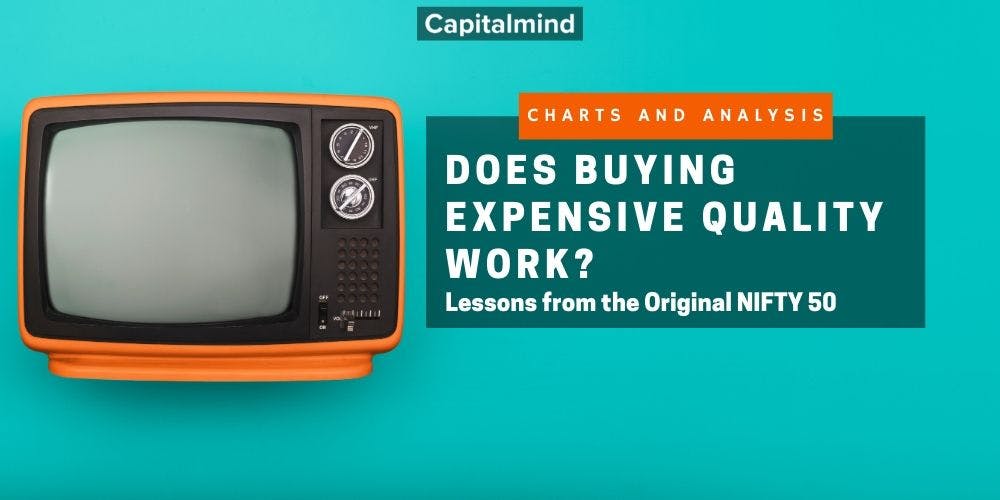(category)Commentary
Is Your Investment Manager a Marketer or a Challenger?Is Your Investment Manager a Marketer or a Challenger?
All Investment Managers are Marketers, but not all are Challengers. Marketers focus on creating products that cater to the "Investor Bliss Point," often leading to trendy, risky investments that chase short-term performance. Challengers, on the other hand, prioritize consistent authentic advice, focusing on long-term results and guiding investors through market uncertainties. Discover why having a Challenger investment manager can be the key to navigating investment pitfalls and achieving your financial goals. This article will help you distinguish between Marketers and Challengers, and appreciate why the Challenger mindset is essential for your long-term investment performance.
Anoop Vijaykumar•


Moskowitz’s pioneering work on psychophysics and the bliss point concept fundamentally changed how major food companies formulate and optimize their products for maximum palatability and consumer appeal.
One of Moskowitz’s most famous projects involving the ‘Bliss Point’ was for Prego spaghetti sauce, owned by Campbell. The Prego brand team hired him in the early 1980s to help them improve their spaghetti sauce recipe. Using consumer panels, Moskowitz tested 61 slightly different variations of the Prego sauce recipe with varying levels of ingredients. Through statistical analysis of the ratings data, Moskowitz found there was no “perfect” recipe everyone loved. Instead, he found that consumer preferences clustered around three distinct flavour segments.
Based on his findings, Prego launched three different flavours of spaghetti sauce - Traditional, Chunky and Spicy, which proved to be a big hit, dramatically reviving Prego sales.

Here’s a question: Was any of what Prego did unethical?
Of course not. This is a classic case study in scientifically identifying consumer preferences and creating the most consumable product, thus making money.
What if you were told that all three Prego sauces have one feature in common? The most prominent ingredient, after tomatoes, is sugar. A half-cup of Prego sauce has the equivalent of more than two teaspoons of sugar. Why is that relevant?
Subsequent studies have shown consuming sugar can promote overconsumption of other foods by increasing hunger signals and diminishing feelings of fullness. In other words, foods with hidden sugar make us feel less full and more hungry without realizing it. As a consequence, we keep eating.
Now, was what Prego did unethical?
Still no, maybe? After all, if the consumer wanted to know what was in the sauce, they only had to turn the can over and read the ingredient label.
Prego made a product that consumers seemed to love and probably would not have been able to articulate even to themselves. Isn’t that why businesses exist?
But Investment Management is tricky. Or rather, the business of investment management is tricky. I use investment management as an umbrella term for manufacturers or distributors of investment products that fee-paying investors invest in or subscribe to. This includes Mutual Funds, Portfolio Management Services, and Model Portfolios offered by Research Analysts and their various intermediaries.
If such a business wanted to determine the products investors are likely to invest in, they could do what Moskowitz did. Bring in a representative sample of customers and offer them a range of potential products to rate. Then, launch the highest-rated products.
Except they don’t need to go to all that trouble. The markets show us daily what products investors find appealing enough to put their money into.
Mutual Funds AUM charts show which funds saw the most inflows and outflows. Model portfolio marketing platforms sponsor mainstream media posts about which of their hundreds of portfolios got the most subscriptions. New fund offer announcements tell us where fund houses are seeing the most interest based on feedback from their distributors.
But just like the consumer panel tasters who preferred the sugar-laden variants because of underlying mechanisms in their gut they are unaware of, we are influenced by the prevailing market sentiment of greed or fear in making investment decisions.
When greed or “risk-on” dominates, we equate seeking out more risk with higher return. That’s when the marketers swing into action.
Successful company promoters must also be good marketers, which is why IPOs rain down during bull markets. Because there is more demand compared to other times and thus higher listing premiums. This applies to the investment management industry, too.
- New Fund Offers abound. Market cap, Sectoral, Thematic, Factor. It almost doesn’t matter as long as it surfs what is trending.
- Exotic-sounding niche products are launched. Since complex-sounding implies superior return, we get “Alpha Subprime Microcap Laser Portfolio” or “Rotational microscopic cap momentum with extra oomph.”
- Moreover, niche products are often more risk-seeking variants of existing successful products. It is easy to piggyback off the success of the core concept, but “this one won’t be bogged down by allocation to large and midcaps.”
- New superstar Research Analyst portfolios appear on model portfolio execution platforms with triple-digit return track records going back all of one year. Did you know that popular platforms allow model portfolio publishers to make individual portfolios visible/invisible? Many publishers predictably use this to launch several portfolios and periodically change which ones are visible based on recent track records.
In other words, when there is demand, the supply appears. Isn’t that why businesses exist?
If there was an excellent Investment Advisor between you and the proverbial ‘Submit’ button of every investment decision, here are a few things this person would say or ask:
- What about the last 12 months of supernormal performance indicates that it will continue over the long term?
- Sure, this strategy from this new outfit has had spectacular recent returns. But then, why do they offer eight other investment strategies and how does one allocate?
- What happens to this investment in a market correction? Has it been through periods of meaningful market distress to offer indications of the future?
- Does this investment stack up net of costs compared to what you already own? Especially if you normalize for future returns going through some mean-reversion?
- Is this new investment offering meaningful diversification from what you own? If not, does adding more exposure at the added cost worth it? Do you need more complexity in your portfolio?
- Are you considering how you’ll feel if this hyper-aggressive approach goes down 35% in a month? Imagine that’s what happened. Now, what action do you see yourself taking?

Good Advisors come between you and potential investing mistakes by challenging whether those investment decisions fit your plan. Good Advisors are Challengers.
They call out “too-good-to-be-true” products flying on the back of recent outperformance. They ensure you don’t forget that risky assets also go through savage drawdowns. Historically, dropping the recent underperformer for the hot fund has usually ended in tears. That fly-by-night operators mostly do just that.
But here’s the thing. For most investors, there isn’t such a person in their corner. Not one that has all three: impeccable ethical credentials, an understanding of financial history and its use of FOMO, and incentives perfectly aligned with yours.
So, your investment manager needs to fill in, at least partially. This is hard because the investment manager’s business works better when they respond to investor appetite. Designing and launching products tailored to the ‘Investor Bliss Point’.

A smallcap NFO launched when small caps were comatose in 2022 would cause barely a ripple. That same fund launched in the latter half of 2023 would have investors breaking down the door to invest. The IRR, lump sum or SIP, for investors in the former, would far exceed that in the latter. But there’d be far fewer of them.
Being a Challenger Investment Manager means:
- Setting future return expectations lower, not higher. Especially after a strong run because markets are unpredictable, and mean-reversion is a thing.
- Being a broken record that the role of diversification is to minimise regrets since there’s no magical way to always be allocated to the highest-returning investment.
- Drawing attention to the downside as much, if not more, as the upside.
- Pointing out the risks of chasing short-term performance, even with your products.
- Resisting the temptation to launch trendy products, especially during market euphoria. Even when direct client feedback tells you there is demand.
- Saying “I don’t know” often, even if and especially because exuding certainty about the future, is page 1 of the Investment Manager Marketing playbook.
Therein lies the dilemma for investment managers. Ok, a dilemma only for some investment managers.
How much “Marketer”? How much “Challenger”?
All Investment Managers are Marketers. Only a few are Challengers.
But somebody needs to be willing to turn the can over and read the ingredient label aloud.
Related Posts
Make your money work as hard as you do.
Talk to a Capitalmind Client AdvisorInvesting is not one size fits all
Learn more about our distinct investment strategies and how they fit into your portfolio.
Learn more about our portfoliosUnlock your wealth potential
Start your journey today



